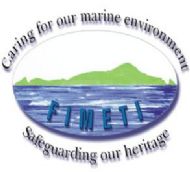Fair Isle Dossier: A Baseline for Developing MPA Management
This dossier draws on long runs of data for Fair Isle, Shetland, to demonstrate the potential of the site for enacting MPA management which truly addresses the measures required to understand and manage sustainably a resource on which the local community depends for its long-term well-being.
The material used in this dossier is all environmental but for Fair Islanders the charts are mere warning signals that the isle’s socio-economic future is at threat. Our island depends on a flow of visitors. They bring income into the isle, help to maintain a relatively high level of transport links and enhance the flow of contact with the outside world. Most of our visitors are drawn by the environmental and cultural values of the isle, values which are hugely associated with the sea.
Whereas the conservation values of Marine Protected Areas have been aired and understood, the social and cultural benefits accruing from a properly managed, sustainable marine area have received little attention. Certainly our attempts to get across the economic benefits of “non-consumptive” values of resources, such as tourism, have failed. Official statements regarding economic benefit still tend to talk exclusively of fishing and energy resources.
The Fair Isle community has been striving for nearly 25 years to get a sustainable management programme for the seas around Fair Isle. Our charts demonstrate that there are wider issues – not least climate driven changes in the physical environment of the sea. Nevertheless the isle sees a real opportunity for management measures to be put in place, not only to achieve respite for our threatened seas but also trial objective-driven measures which truly embrace the concept of sustainability.
That is why the Fair Isle community has lodged a detailed proposal with the Scottish Government for a Demonstration & Research MPA in Fair Isle waters.
Nick Riddiford
Coordinator, Fair Isle Marine Environment & Tourism Initiative (FIMETI)
September 2013
Acknowledgements
The seabird data comes courtesy of Fair Isle Bird Observatory & the JNCC Seabird Monitoring Scheme. Dave Wheeler of the Fair Isle Meteorological Station kindly provided the surface sea temperature data.

SEABIRDS IN TROUBLE
Seabirds are indicators of the health of the marine environment. This dossier of seabird population changes indicates that all is not well in Fair Isle waters. It also demonstrates why Fair Islanders are so concerned. Our isle thrives, socially and economically, on the flow of visitors attracted by our high quality environmental and cultural values. We cannot afford to let them deteriorate. Burgeoning, noisy seabird colonies are an essential part of the summer visitor’s experience; sitting next to cliff-top puffins is the icing on the cake. We can no more lose these than a baker his source of flour. We have access to long runs of weather data, including surface sea temperatures, salinity and plankton levels. These tell us that site management needs to sit hand in hand with wider universal actions against climate change.
What do we learn from the following charts?
seabirds
-
They illuminate an on-going catastrophe for Fair Isle seabirds, and ourselves
-
They indicate a marine environment under enormous stress and undergoing massive change
-
And they tell us that we cannot sit on our hands and do nothing.
sea temperatures
-
They indicate a marine environment under enormous stress: temperature fluctuations test the tolerance level of all biota
-
sustainable management needs to take these factors into account.
What the charts don’t tell us
-
our birds are now having to forage as far as the Scottish coast to find food for their chicks
-
in the early 1980s, 90% of Fair Isle seabirds were finding food for their chicks within one kilometre of the shore
-
large short-term temperature fluctuations – over single springs – further test the tolerance levels of all but the most adaptable biota
-
Fair Isle’s banks of data and its biogeographical location - twixt North Sea and Atlantic, northern and southern plant and animal communities – make it an ideal site for demonstrating and trialling MPA management.
Life expectancy: we are fortunate that puffins, guillemots and razorbills are long-lived. Life expectancy for an experienced adult puffin can be 30 years and this has maintained population levels reasonably high. But with so few young fledged over the last 20 years resulting in little recruitment of younger individuals to the breeding population, the risk of a sudden major population decline is ever closer. The puffin is an accomplished flier but the Fair Isle puffin population could soon be falling of a cliff. Kittiwakes are not so fortunate. Adult life expectancy is lower. They balance this by laying two eggs, not the single egg of the longer-lived birds. However, in six of the last 11 years they have failed to raise any chicks and productivity has been low since the turn of the century. The population has fallen 96% in 25 years. Decimation is too generous a term. (See figure below).
Figure 3. Population change of Black-legged Kittiwakes on Fair Isle, 1969 - 2012 (whole island counts and plot counts of apparently occupied nests - AON). Plot counts for each year are the sum of counts from ten study plots. At this rate kittiwake will be extinct on the isle within the next few years.

Text and photographs Copyright Fair Isle Marine Environment and Tourism Initiative. All rights reserved

